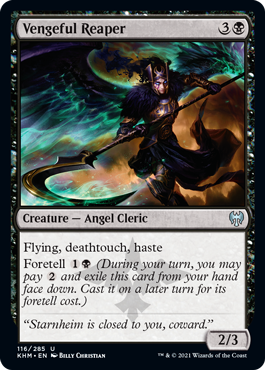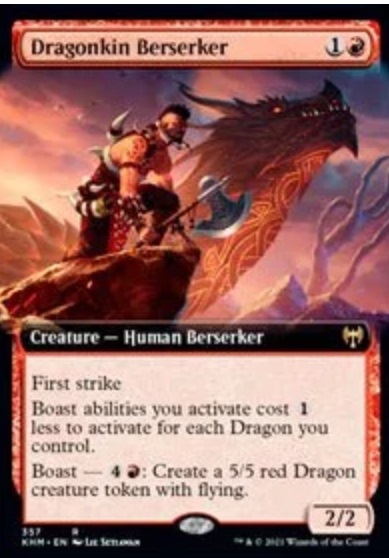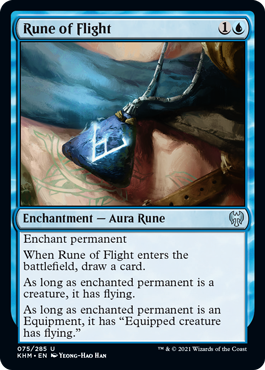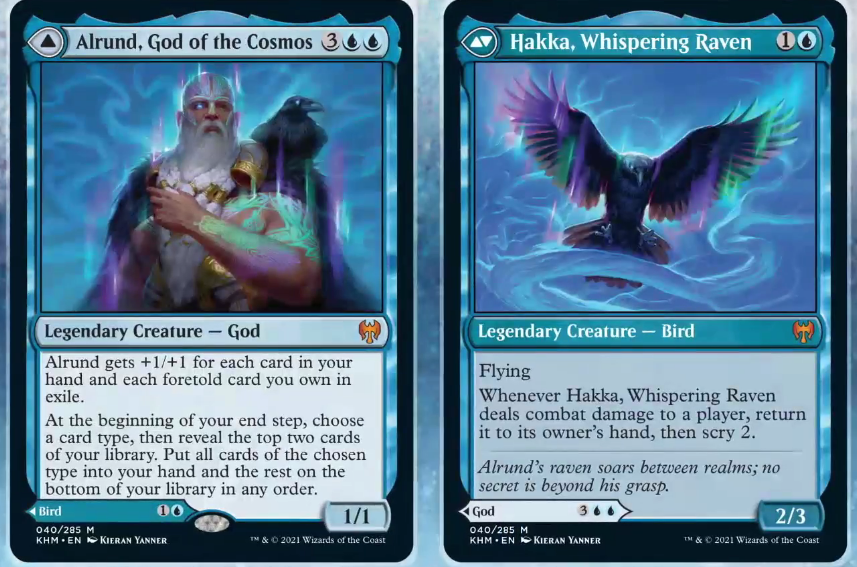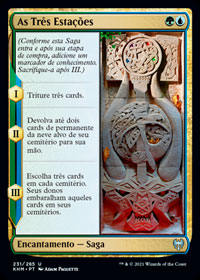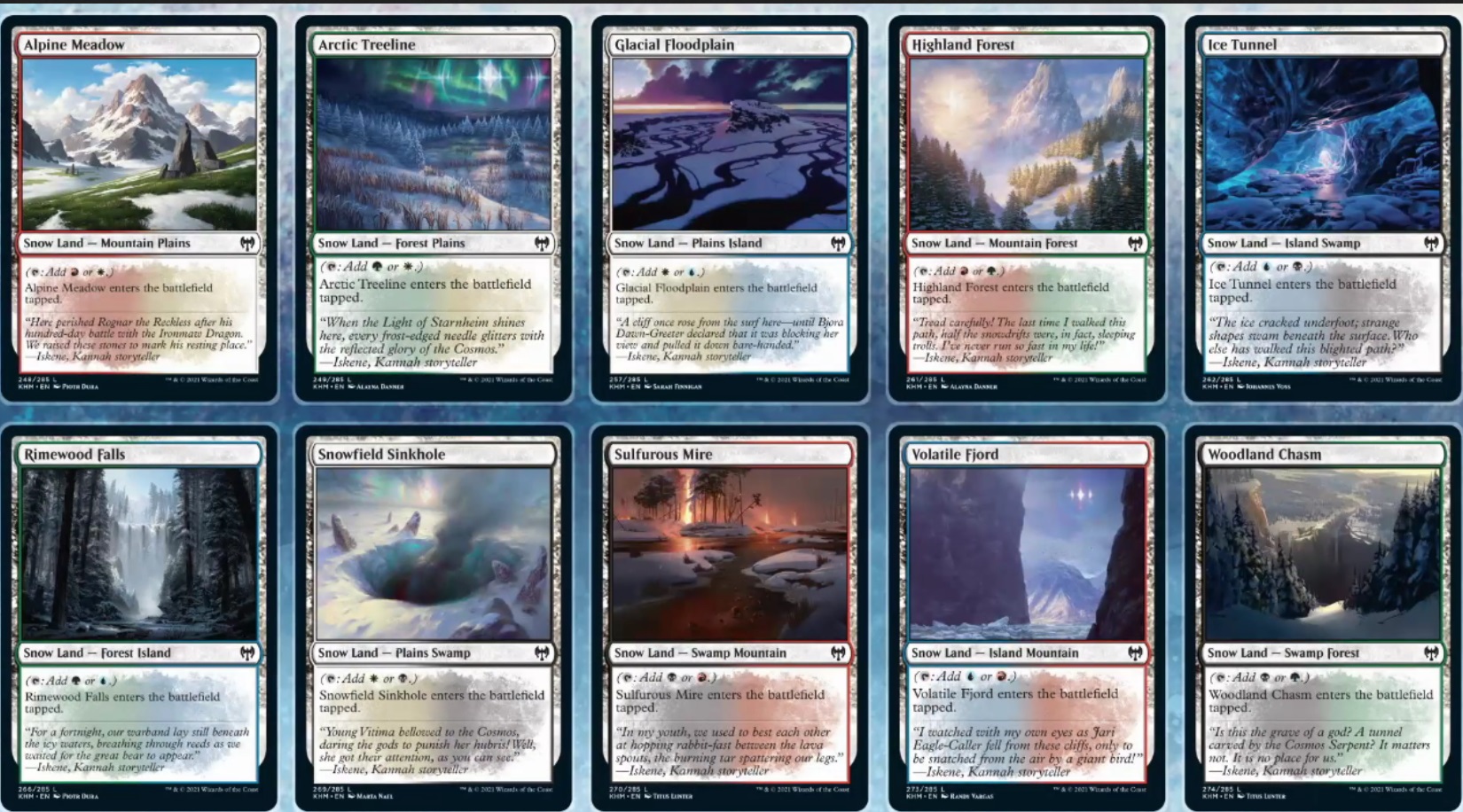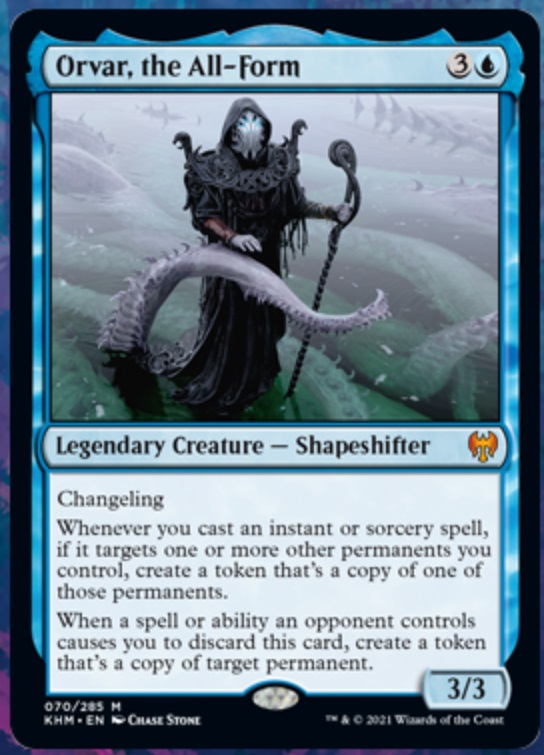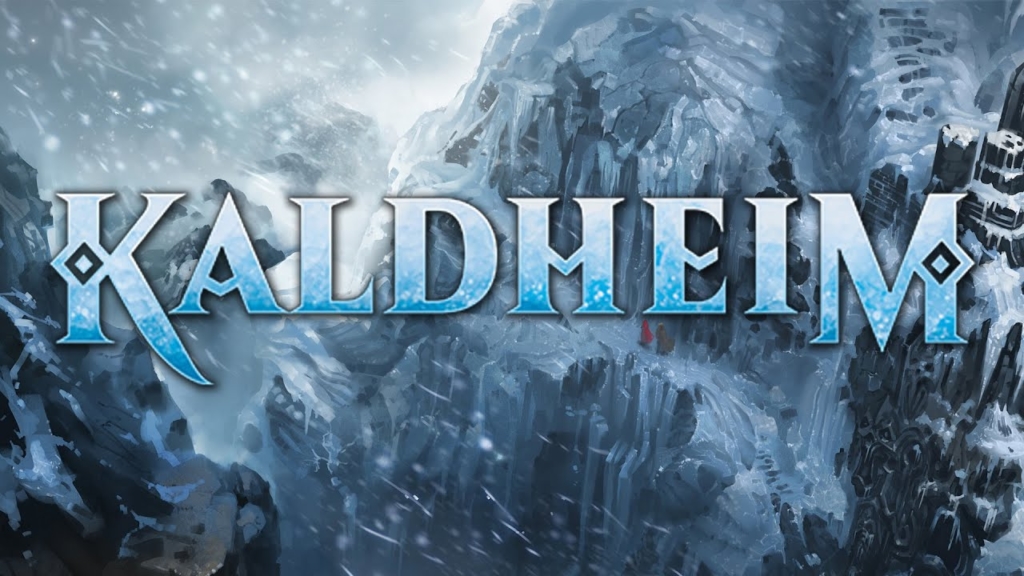MTG: The Mechanics Of Kaldheim
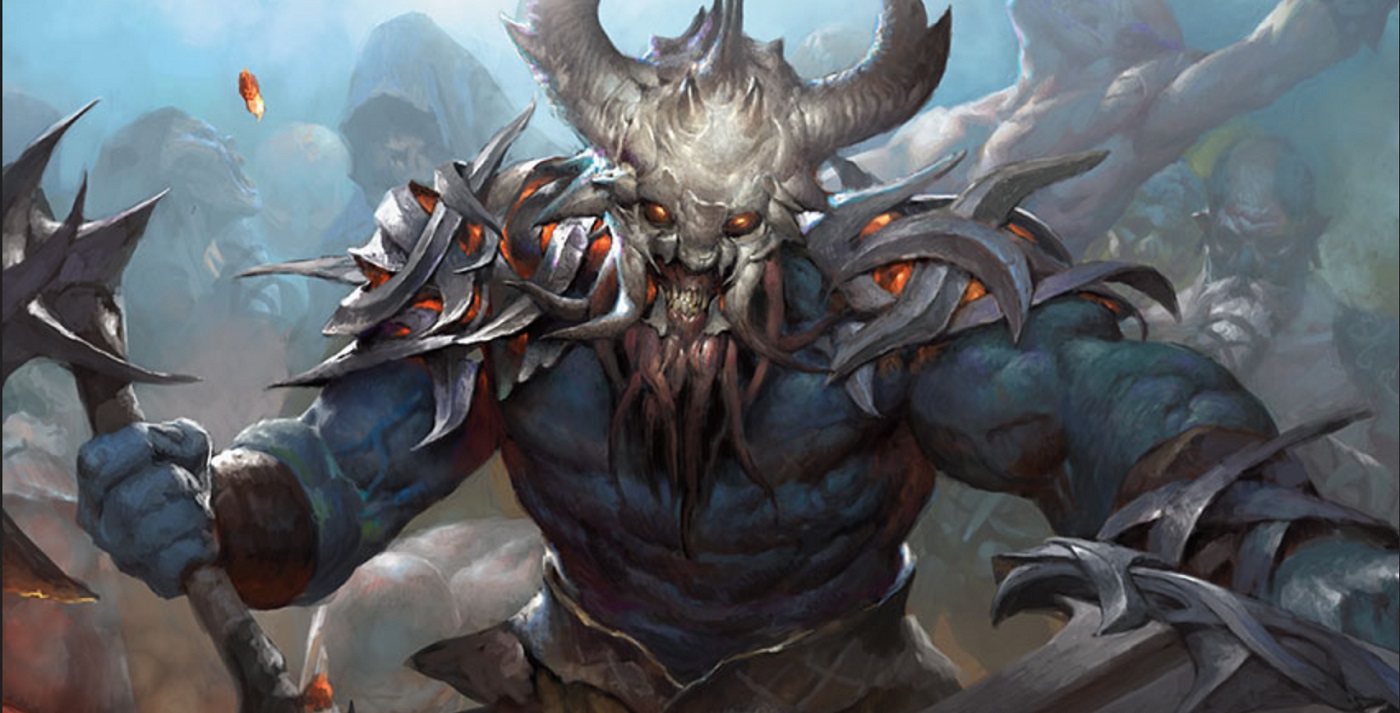
The newest Magic: the Gathering set, Kaldheim, is full of powerful cards with powerful new abilities. Today we’re looking at the set mechanics of Kaldheim.
Kaldheim is a vikingtastic new set, and with any new M:tG set come new (or returning favorite) set mechanics. Today we’re gonna roll up our sleeves and take a look at the mechanics that define Kaldheim. You’ve probably seen a few of these before if you’ve been looking at spoilers, but let’s take a look at ’em all and maybe you’ll find a few disgusting combos to put together for your next deck.
Foretell
This lets you exile a card by paying 2 colorless mana, and you can exile it to cast on a later turn for much cheaper. There’s no end to the shenanigans you can pull with this kind of mechanic, especially since you can have multiple cards foretold at once. Here’s a breakdown of the rules:
The rules for foretell are as follows:
702.141. Foretell
702.141a Foretell is a keyword that functions while the card with foretell is in a player’s hand. Any time a player has priority during their turn, that player may pay {2} and exile a card with foretell from their hand face down. If the player does, that player may look at that card and they may cast it after the current turn has ended by paying any foretell cost it has rather than paying that spell’s mana cost. Casting a spell this way follows the rules for paying alternative costs in rules 601.2b and 601.2f–h.
702.141b Exiling a card using its foretell ability is a special action, which doesn’t use the stack. See rule 116, “Special Actions.”
702.141c If an effect refers to foretelling a card, it means performing the special action associated with a foretell ability. If an effect refers to a card or spell that was foretold, it means a card put in the exile zone as a result of the special action associated with a foretell ability, or a spell that was a foretold card before it was cast, even if it was cast for a cost other than a foretell cost.
Advertisement702.141d If an effect states that a card in exile becomes foretold, that card becomes a foretold card. That effect may give the card a foretell cost. That card may be cast after the current turn has ended for any foretell cost it has, even if the resulting spell doesn’t have foretell.
702.141e If a player owns multiple foretold cards in exile, they must ensure that those cards can be easily differentiated from each other and from any other face-down cards in exile which that player owns. This includes knowing both the order in which those cards were put into exile and any foretell costs other than their printed foretell costs those cards may have.
702.141f If a player leaves the game, all face-down cards foretold cards that player owns must be revealed to all players. At the end of each game, all face-down foretold cards must be revealed to all players.
- Because exiling a card with foretell from your hand is a special action, you can do so any time you have priority during your turn, including in response to spells and abilities. Once you announce you’re taking the action, no other player can respond by trying to remove the card from your hand.
- Casting a foretold card from exile follows the timing rules for that card. If you foretell an instant card, you can cast it as soon as the next player’s turn. In most cases, if you foretell a card that isn’t an instant (or doesn’t have flash), you’ll have to wait until your next turn to cast it.
- If you’re casting a foretold card from exile for its foretell cost, you can’t choose to cast it for any other alternative costs. You can, however, pay additional costs, such as kicker costs. If the card has any mandatory additional costs, those must be paid to cast the spell.
Boast
Kaldheim is not a set for the faint of heart. And boast wants you to forego cautiousness when you could instead be attacking. After an attack, you can pay the boast cost to get the extra effect on a card, which can be creating tokens, buffing yourself or a creature, and so on. A few things to keep in mind:
-
A boast ability can be activated at any point after the creature with that ability has been declared as an attacker. This can be before blockers are declared, after blockers are declared but before combat damage is dealt, during combat after combat damage is dealt, during the postcombat main phase, during the end step, or, in some unusual cases, during the cleanup step.
-
If it’s not your turn and you gain control of a creature with a boast ability after that creature attacked, you can activate that creature’s boast ability if it hasn’t been activated yet that turn.
-
If a creature with a boast ability is put onto the battlefield attacking, it was never declared as an attacker. Its boast ability can’t be activated that turn.
-
If an effect adds additional combat phases to a turn and a creature with a boast ability attacks more than once during that turn, its boast ability can still be activated only once.
Subscribe to our newsletter!Get Tabletop, RPG & Pop Culture news delivered directly to your inbox.By subscribing you agree to our Terms of Use and Privacy Policy.
Rune
Rune is an enchantment subtype that you’ll find on aura enchantments that can make creatures or Equipment better. It’s not a mechanic on its own, but the new type does bring with it some interesting rules interactions:
- Runes can target and be attached to any permanent, even one that isn’t currently a creature or an Equipment. You can cast a Rune choosing a Vehicle as the target, for example. The Rune’s enters-the-battlefield ability will trigger, and you’ll draw a card. The Rune won’t do anything while the Vehicle isn’t a creature, but if it becomes one later, the appropriate ability will start applying.
- If the target of an Aura spell is an illegal target as that spell tries to resolve, it won’t resolve, it won’t enter the battlefield, and none of its enters-the-battlefield triggered abilities will trigger.
Modal Double-Faced Cards
Modal DFCs are back in a big way with Kaldheim. We’ve seen DFC lands, and it looks like the gods are modal too. This is a returning mechanic, so you likely know how it works, but these cards offer some extra flexibility to consider–like if an effect lets you search your library for a bird, you could find Hakka, Whispering Raven but couldn’t cast Alrund, god of the Cosmos.
Saga
Saga is back as well. It’s exactly the same as you remember: put lore counters on the Saga as it enters the battlefield, as you increase lore counters, you gain access to the effects associated with the chapter that you’re on, eventually sacrificing it once the last chapter has either successfully resolved or been countered.
Snow
It wouldn’t be Kaldheim without Snow, and there are plenty of cards that refer to Snow effects. You might have a card that requires a cost in terms of Snow, which isn’t a type of mana, but rather mana of any color or colorless, as long as it comes from a “snow source” like snow-covered mountains. It’s one of the weird, fiddly things about the set–you can’t use cards that produce “any kind of mana” to produce snow, only snow sources can–but it’s pretty straightforward.
Changeling
And as you’ve seen, Changeling is big in Kaldheim. This lets a creature count as all creature types, which means you can make a sliverless sliver deck and I’m here for that.
What do you think of the new mechanics?

